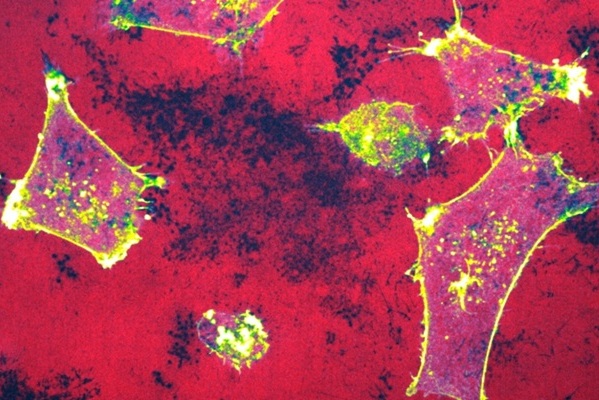Visualization Tool Illuminates Breast Cancer Cell Migration to Suggest New Treatment Avenues
Posted on 06 Jun 2025
Patients with breast cancer who progress from ductal carcinoma in situ (DCIS) to invasive ductal carcinoma (IDC) face a significantly worse prognosis, as metastatic disease remains incurable. While cancer cell migration plays a central role in metastasis, tracking how cells receive and respond to movement-regulating signals has proven difficult. Now, a newly developed fluorescent probe is helping researchers visualize these signaling dynamics in real time, offering a promising pathway for therapeutic intervention to limit cancer spread.
The study was conducted by researchers at the University of Turku (Turku, Finland), whose work focuses on identifying molecular factors that regulate the metastatic behavior of breast cancer cells. Their recent findings center on the role of the protein phosphatase Shp2—short for “Ship two”—which emerged as a critical regulator of metastasis by influencing how cancer cells interact with surrounding tissues. Using their new fluorescent probe, the research team was able to observe how cancer cells process external signals during migration. The probe highlights real-time signaling events within moving cells, making it possible to monitor the dynamics that drive metastasis. This innovation provided the researchers with deeper insight into Shp2’s function and its role in promoting the invasive capabilities of breast cancer cells.

The team’s study also revealed that certain drugs already in clinical trials for other tumor types could be repurposed to inhibit breast cancer metastasis by targeting Shp2-mediated signaling. While these findings are specific to breast cancer, the researchers believe the implications extend to understanding invasion mechanisms in other solid tumors. The work not only introduces a powerful tool for studying cancer cell movement but also opens up new avenues for potential treatment strategies. The researchers are now actively pursuing therapeutic applications based on these results. The implications of this discovery extend beyond breast cancer alone and may help understand cancer cell invasion from solid tumors more generally.
"Researchers develop color-based probes to detect different events in live cells, but this type of cell-dynamics reporter had not been available before. It has transformed our understanding of what sorts of signaling are needed for cell movement,” said Dr. James Conway, the lead researcher of the team. “These probes often take on names from pop culture references. The lab came up with the name Illusia, drawing from an old Finnish story about a fairy that comes to earth from the rainbow. This gave our work a colorful twist, something we are all seeking in today’s world, as we strive for better treatments.”
Related Links:
University of Turku














